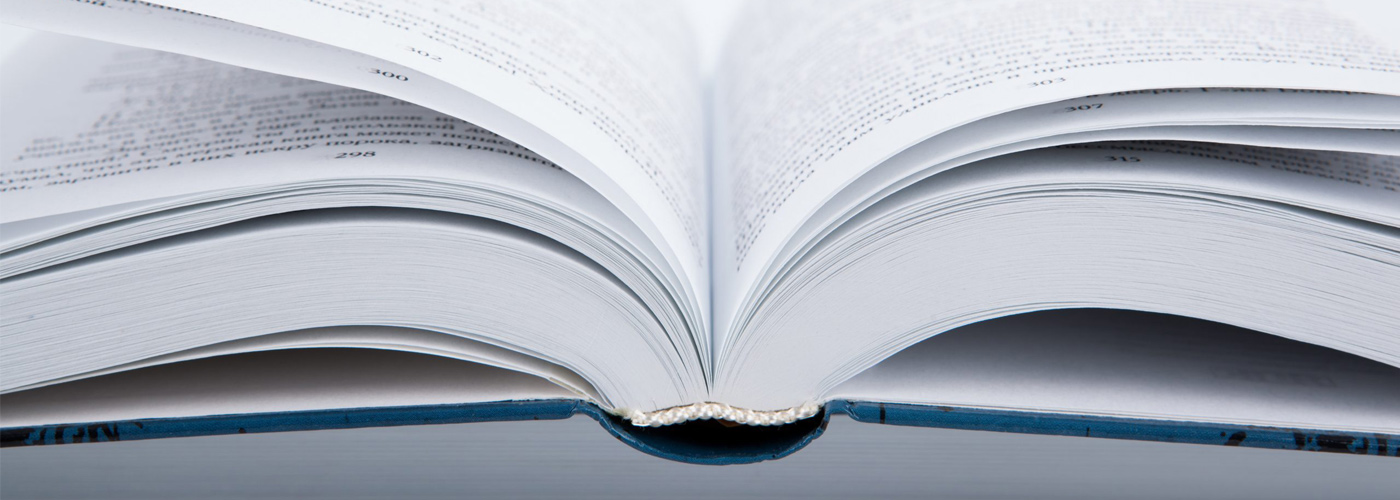
Once the cover and the book block have been made, it’s time to put it all together! The book block is then glued to the case in a process called ‘casing in.’ Once attached, you have a hardcover bound book ready to put on the shelf.
|
Traditional bookbinding, also called hardcover binding, involves making a book using a hardcover or thick outside ‘case.’
This process takes a few steps and starts by creating the outer cover or case. The cover is first created through a process called "case making,” which requires gluing and folding the cover material over a thick paper board. Meanwhile, the interior of the book is printed page by page. These sheets are gathered and folded together. The pages are then sewn or glued into a ‘book block.’ A strip of cloth is added to the spine, where the book block will be glued to the case. Once the cover and the book block have been made, it’s time to put it all together! The book block is then glued to the case in a process called ‘casing in.’ Once attached, you have a hardcover bound book ready to put on the shelf. What Adhesives are Used in Traditional Bookbinding? There's more than one type of adhesive to use when binding hardcover books. We’re going to cover the big three.
Gelatin Glue Gelatin glue, or protein glue, is used in many everyday applications, such as bookbinding, game board manufacturing, packaging, woodworking, and more. Yes, it is derived from protein, but modern gelatin is created by recycling pharmaceutical netting. Today, gelatin glue is still used in the manufacturing of hardcover books and by historians to preserve older volumes created using protein-based adhesives. Gelatin glue comes in and out of popularity with bookbinders, but it is returning to vogue for the following reasons. Benefits of Using Gelatin Glue in Bookbinding Useful in “green” applications and biodegradable Open time, tack level, and viscosity easily adjusted to different running parameters Easy clean up with water Eco-friendly, biodegradable, recyclable, and repulpable Water-soluble Forms a strong, long-lasting bond Operators can correct application issues with temperature, dilution, and application levels
Hot Melt Glue Hot melt adhesives are solid, polymer-based glues that do not contain solvents or water, allowing them to dry and bond quickly. Since hot melt is a thermoplastic, the glue stays in a solid state at room temperature and liquefies in the presence of heat. While many companies use gelatin glue for traditional bookbinding, some have started using EVA hot melt because of its versatility and ease of use. Benefits of Using Hot Melt in Bookbinding Dispens quickly Dries rapidly and clearly Provides a strong hold Easy to store in solid form Offers excellent page-pull Liquid Glue Liquid glues, or white glues, are water-based formulations used for a range of applications. They are popular with manufacturers because they are generally eco-friendly, non-toxic, and safe to handle. This type of glue also doesn’t need to be heated before application. Liquid glue tends to be popular for adhering the cover to the book block. Benefits of Using Liquid Glue In Bookbinding
Depending on your application or production setup, one type of glue might work better than another for traditional bookbinding. |
| Tag:bookbinding,book binding,adhesive,casing-in |
Please Leave Your Messenger Here!
We will do our best to make your business prosperous!




